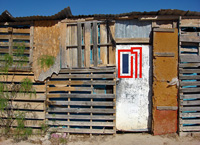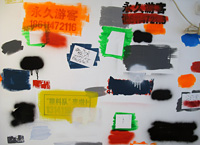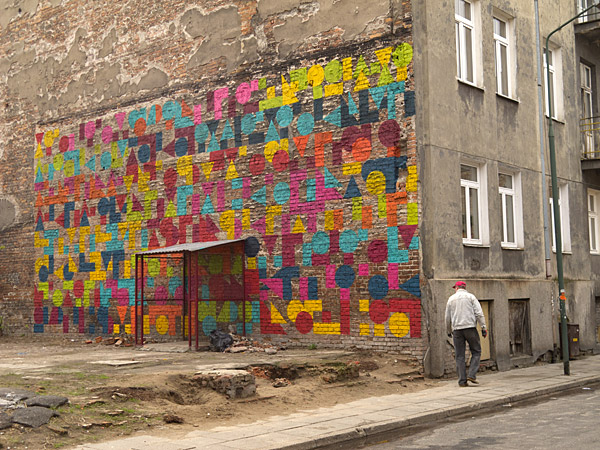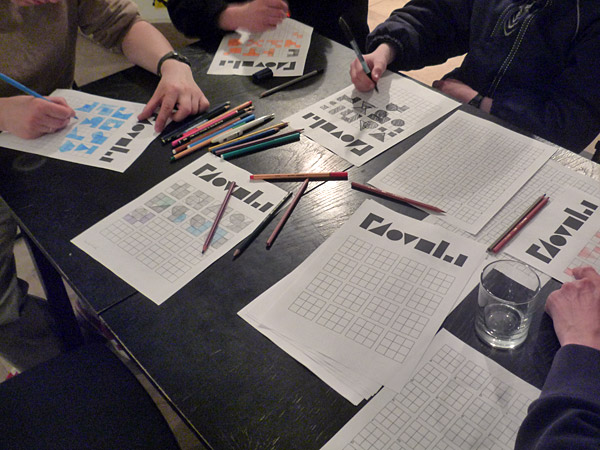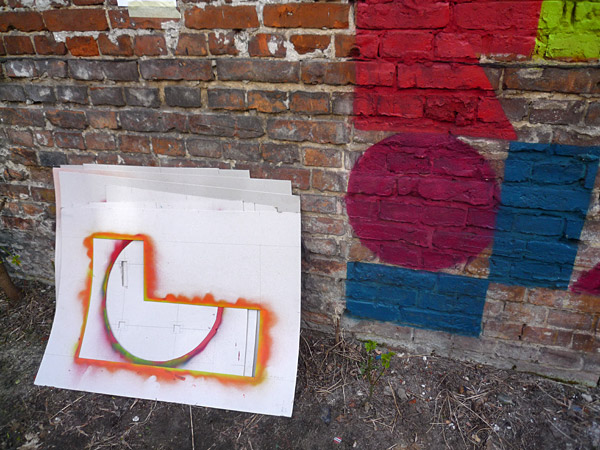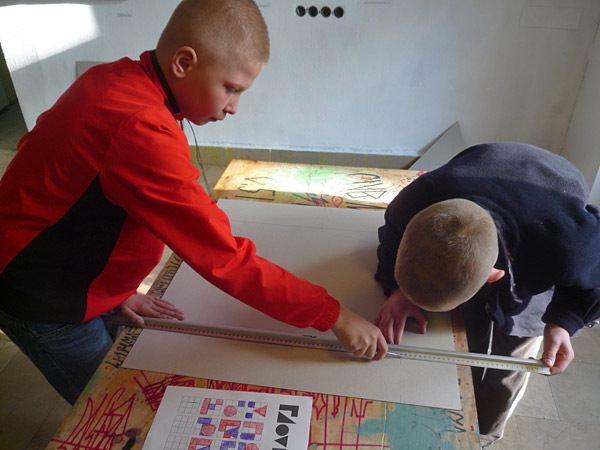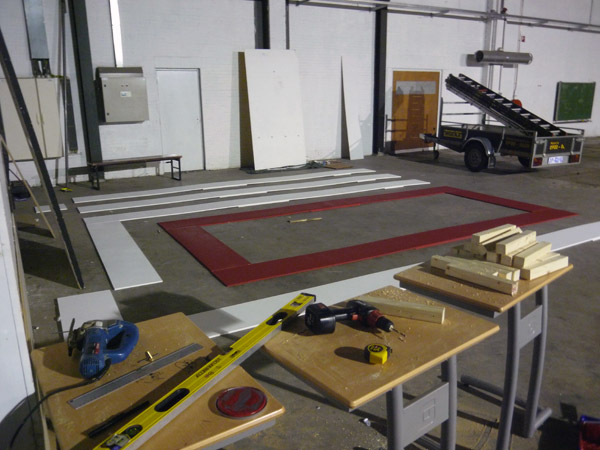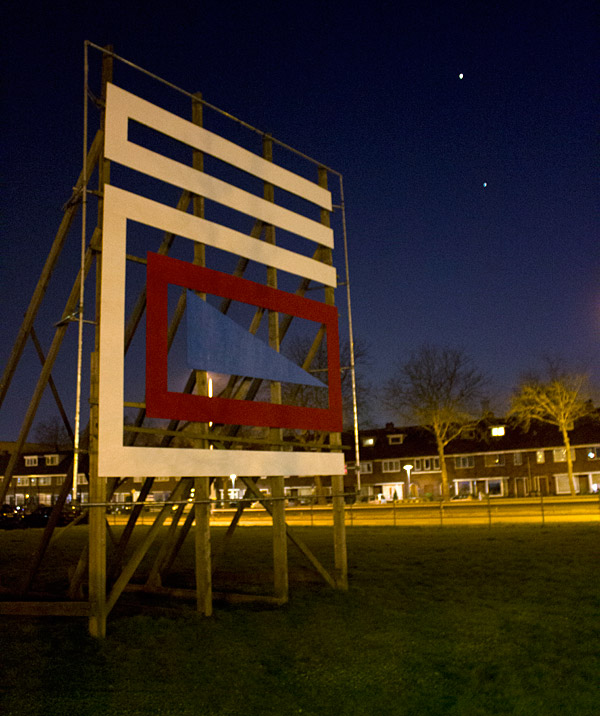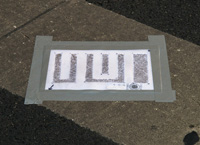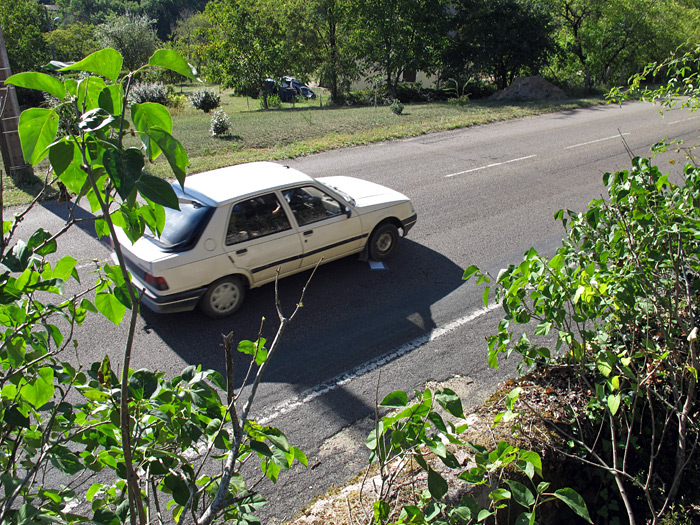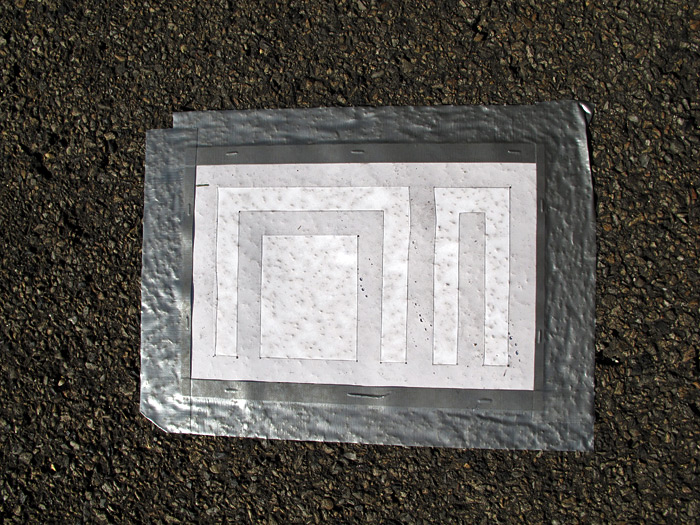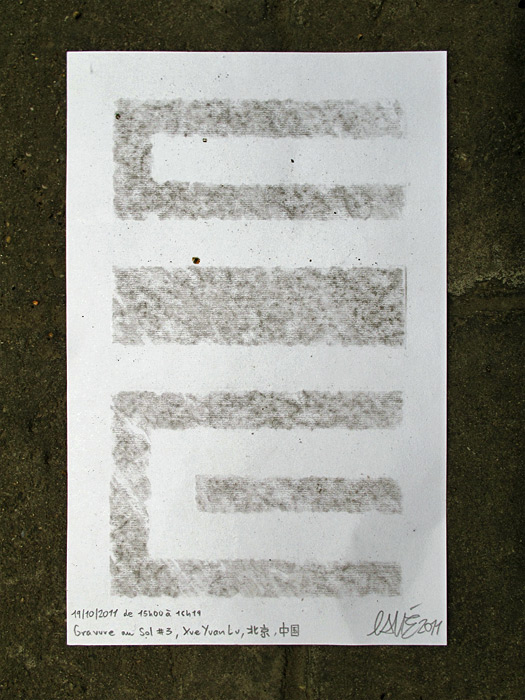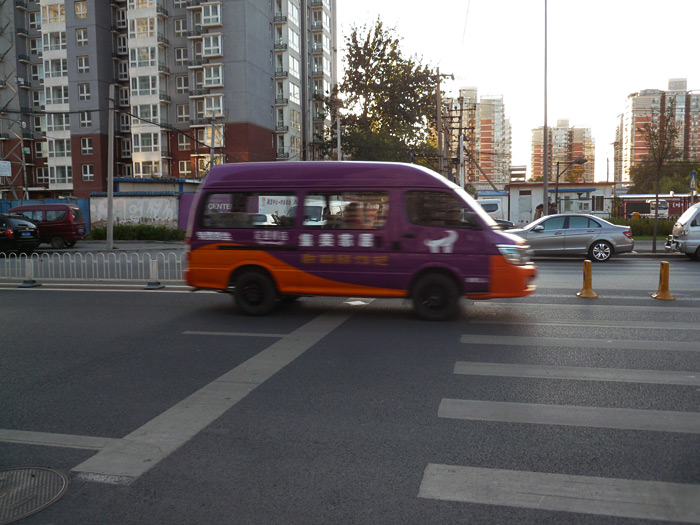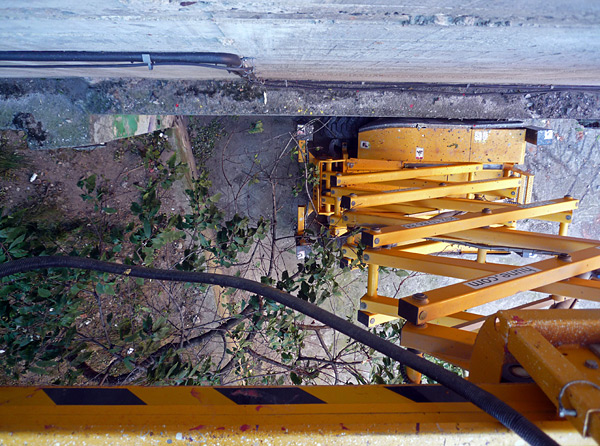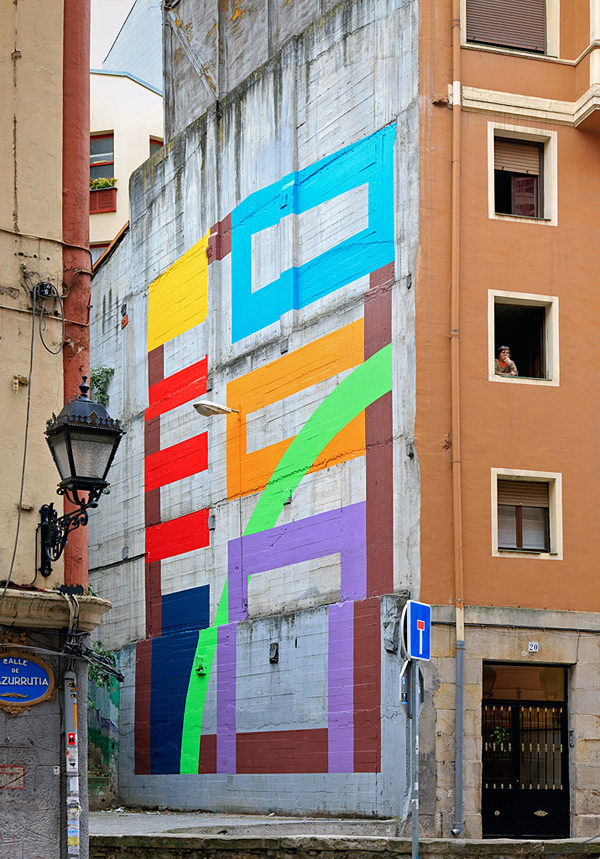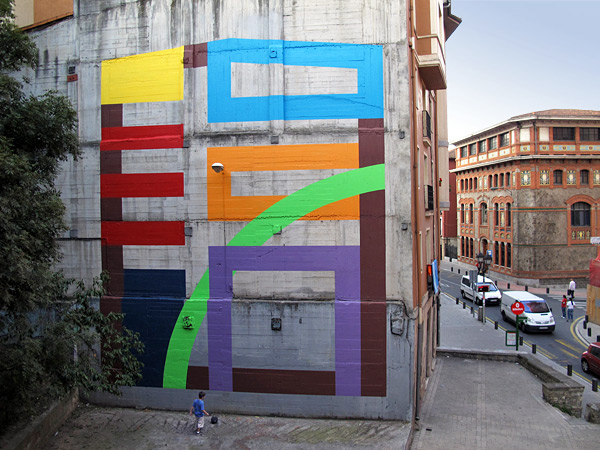I have always been fascinated by auto-construction. From the gate at the end of a garden to a brick house found on the slope of a hill in Brazil. This type of architecture is immediate, organic, it expands in an almost natural way. This urban fabric’s apparent chaos is often more human than one found in a city where the construction follows standard urban planning. Aesthetically speaking, worn out textures and the discovery of a variety of materials (bricks, cement blocks, metal panels, wooden slabs…) have always attracted me as an artistic surface.

The Barrios project began in April of 2006 when, invited by some friends, Nuria Mora and I painted in a favela in Rio de Janeiro. After exchanging ideas with the residents, I was very pleased to see that they were so receptive to what I was painting. They really appreciated the colors and the composition. This positive reaction led me to reflect on Contemporary Art and specifically its access to the public. It was obvious that, unfortunetly, the residents of the favela didn’t often visit museums or art galleries. Even though the appreciation of a work of art is universal, access to art itself is not. Since then, it has become a special mission for me to bring contemporary art to places where there is none. When discussing this with my friend Nazza, a fellow artist, he said, “what is the point of painting in the street in the center of Buenos Aires where people have money and can buy art and pay to enter museums, I only paint on the outskirts of the city.” He is completely right… Why give art for free to the people who need it the least? Where people really need art is in the Barrios!
This is not about outside eyes prying, or looking into a foreign world. My idea is to create a dialogue with the residents and enrich their daily lives by providing them with a humble gift. Sharing with them what I know and receiving what they can teach me. With Barrios, the human experience is always more rewarding for me than the artistic experience.
Barrios is an open project in constant development, more interventions and publications will come in the future. Of course, any idea or proposal is welcome as I am always looking to find new opportunities to make art more democratic.
Below you will find photographic galleries of six projects that I have developed within the framework of Barrios up until now. The photos were taken by project organizers, friends, neighbors and a few are my own.
Gardiena Azul
Rio de Janeiro, Brazil, 04/2006
In collaboration with Nuria Mora
More details: www.eltono.com/projects/gardenia-azul
Puerto Lumbreras
Murcia, Spain, 08/2006
Two week artistic residence within the neighborhood
In collaboration with Emece and Puerto Lumbreras City Council
A book about the project has been edited by the city council:
www.eltono.com/boutique/puerta-lumbreras-book
More details: www.eltono.com/projects/puerta-lumbreras
Huasteca, Santa Catarina and Espinazo
Nuevo León, Mexico, 11/2007
Paintings made with the help of Nrmal, Maf and Screw
Puerto Vallarta
Jalisco, Mexico, 10/2008
Ten day artistic residence
In collaboration with Paco Rosas and Libelulart
More details: www.eltono.com/projects/puerto-vallarta
Tampiquito
Monterrey, Mexico, 04/2009
Two-month artistic residence within the neighborhood
In collaboration with Nrmal and El Narval
More details: www.eltono.com/projects/residencia-tampiquito
Villa Urquiza and La Matanza
Buenos Aires, Argentina, 12/2007 and 04/2010
Paintings made with the help of Nazza Stencil
We were returning to my friend Nazza’s home after painting, when we ran into the neighbor´s children playing football against a wall in front of the house. I paint lines, we had white paint and we were walking through a neighborhood in Argentina… It was pretty obvious that I would end up painting a goal on the wall! This is probably the most interactive piece I have ever painted.
Caochangdi – 草场地
Caochangdi, Beijing, China, 06/2012
1/1 Project with C-Space gallery
More details here: www.eltono.com/en/projects/1-1-caochangdi
